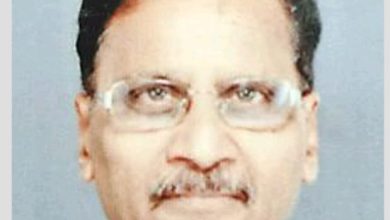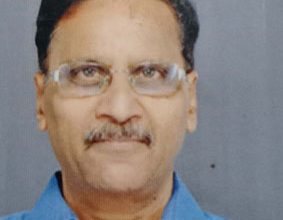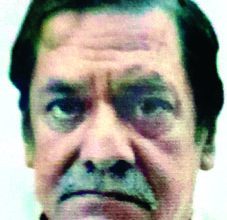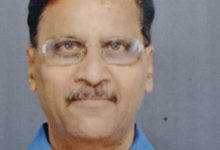Bhimrao Ambedkar : The fighter for depressed masses

Er. Prabhat Kishore
The governance system of every independent nation is governed by its constitution. After independence, the making of a constitution in a diverse country like India was an arduous task. The leading figures of the Constituent Assembly for the formation of the Constitution was Dr. Bhimrao Ramji Ambedkar, under whose chairmanship the Drafting Committee played a pivotal role in giving concrete shape to the Constitution.
Bhim Rao Ambedkar was born on 14th April 1891 in the army headquarters of Mhow in Madhya Pradesh. In 1906, at the age of fourteen, he married 9-year-old Rama Bai. He passed the matriculation examination in 1907.
Impressed by Ambedkar, Maharaja Sayajirao Gaikwad of Baroda approved him a scholarship of twenty five rupees per month. In 1912, he passed his graduation in Economics and Political Science from the University of Mumbai. He was the first Mahar Dalit to study in a foreign university. In June 1915, He was awarded M.A. degree in economics. In June 1916, Ambedkar submitted his dissertation entitled “National Dividend for India: A Historical and Analytical Study” for a PhD degree. In October 1916, he was admitted to the Grays Inn of Law. In July 1917, He was appointed military secretary to the Maharaja of Baroda. He saw the ugly face of the caste system in its entirety. He was not even allowed drinking water in the office. Due to the misbehavior, he left Baroda and returned to Mumbai in November 1917.
In November 1918, Ambedkar got the position of lecturer of political economy at Sydenham College. He participated in the conference of Depressed Classes held under the chairmanship of Shahuji Maharaj in Nagpur in 1918 and in Kolhapur on 21 March 1920. On 31 January 1920, to support the cause of the Depressed Classes in India, a weekly named “Mook-Nayak” was started.
In September 1920, Ambedkar re-enrolled at the London School of Economics and Political Science and qualified for the degree of Law from Grays Inn, London. He got a Master of Science (Economics) degree in June 1921 and D.Sc. (Economics) degree in March 1923. In April 1923, he met the Secretary of State for India, ES Montag and Vitthalbhai Patel, and discussed the grievances of the untouchables in India. In June 1923, He started legal practice at the High Tribunal, Mumbai. He then left the practice and became a lecturer in business law at the Batliboi Accountancy Institute on a part-time basis for 3 years.
On 9 July 1924, Ambedkar formed the Bahishkrit Hitkarini Sabha to spread education, improve economic conditions and listen to grievances among the depressed classes. On 3 April 1927, he started a newspaper called ‘Bahishkrit Bharat’ and started Satyagraha for entry of depressed masses into the temples in Mahad. In 1926, he gave evidence before the Royal Commission on Money and Finance. In 1927 he was nominated to the Bombay Legislative Council along with Dr. Solanki. In the same year he demanded separate electorate for Dalits before the Simon Commission. In November 1930, he was invited as a representative of the Dalits in the First Round Table Conference held in London. In August 1931, he opposed Gandhiji’s claim to represent Dalits in the Second Round Table Conference held in London itself.
In August 1932, Ramsay MacDonald published the Communal Arbitration for Separate Electorates for Dalits against which Gandhiji, started fast till death. The Poona Pact was signed on 25 September 1932 by Ambedkar (on behalf of the marginalized community) and Madan Mohan Malviya (on behalf of other Hindus) and the order regarding separate electorates was withdrawn. From 1932 to 1934, he was a member of the Joint Parliamentary Committee on Constitutional Reforms. He participated in the Third Round Table Conference held in London in 1933-34. In June 1935, Ambedkar was appointed Principal and Perry Professor of Jurisprudence at the Government Law College, Mumbai.
Ambedkar formed the Independent Labour Party. The party contested 17 seats for the Mumbai Legislature and won 14 seats. In 1938, he opposed the Congress party’s bill to replace the word ‘untouchable’ with the word ‘Harijan’. In November 1946 he was elected to the Constituent Assembly from Bengal. He advocated the partition of India. On 29 August 1947, at the initiative of Sardar Patel, he was made the chairman of the drafting committee for the making of the Constitution of India. He did not agree with Nehruji’s initiative to give special status to Jammu and Kashmir and the inclusion of Article 370 in the Constitution. But he could not oppose it as Nehru had made it a question of prestige. On 27 November 1949, Ambedkar presented the Constitution of India to the government.
After independence on 15 August 1947, Ambedkar became the Law Minister in the Nehru Cabinet. In 1951, he resigned from the cabinet due to differences of opinion on the government’s apathy towards the Scheduled Castes, India’s foreign policy and the Hindu Code Bill. In the first Lok Sabha election in 1952, he was defeated by a Congress candidate from Mumbai. In March 1952, he was nominated to the Rajya Sabha.
On 15 April 1948, Ambedkar married Dr. Sharda Kabir, who later came to be known as Savita Ambedkar. He was a bitter critic of the evils of Islam in South Asia and condemned child marriages, polygamy and purda system in the Muslim community. In the year 1949, he addressed the World Buddhist Conference in Kathmandu, Nepal on the topic “Marxism vs Buddhism”. In December 1950, he again participated in the World Buddhist Conference in Sri Lanka. In July 1951, he formed the Bharatiya Buddhist Jana Sangh. In September 1951, he compiled a Buddhist worship treatise called “Upasana Panth”. On 14 October 1956, He embraced Buddhism along with 5 lakh people in a historic ceremony in Nagpur. This great activist and social reformer took the last breath on 6th December 1956, leaving his colossal work.
(The Author is a technocrat and educationist)






